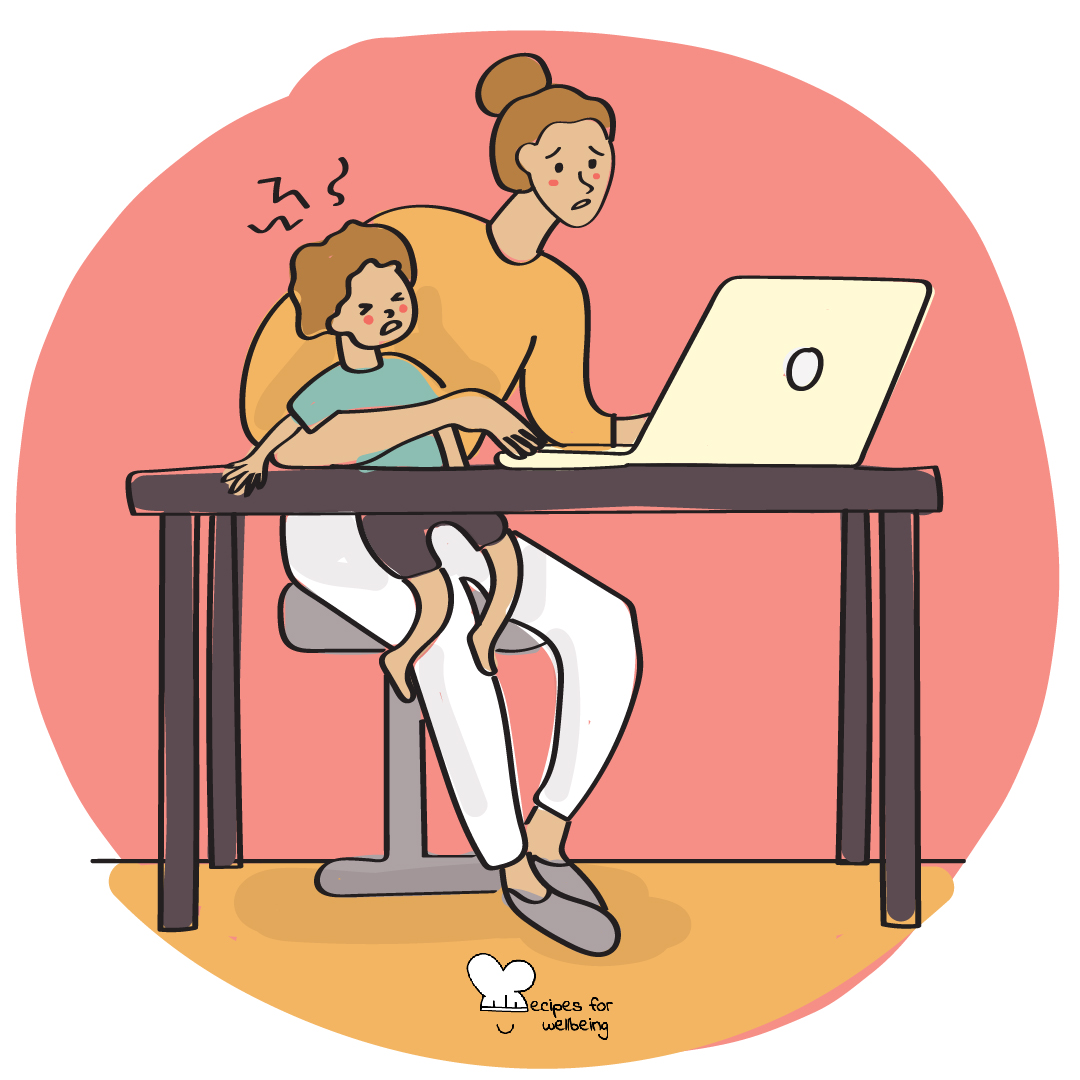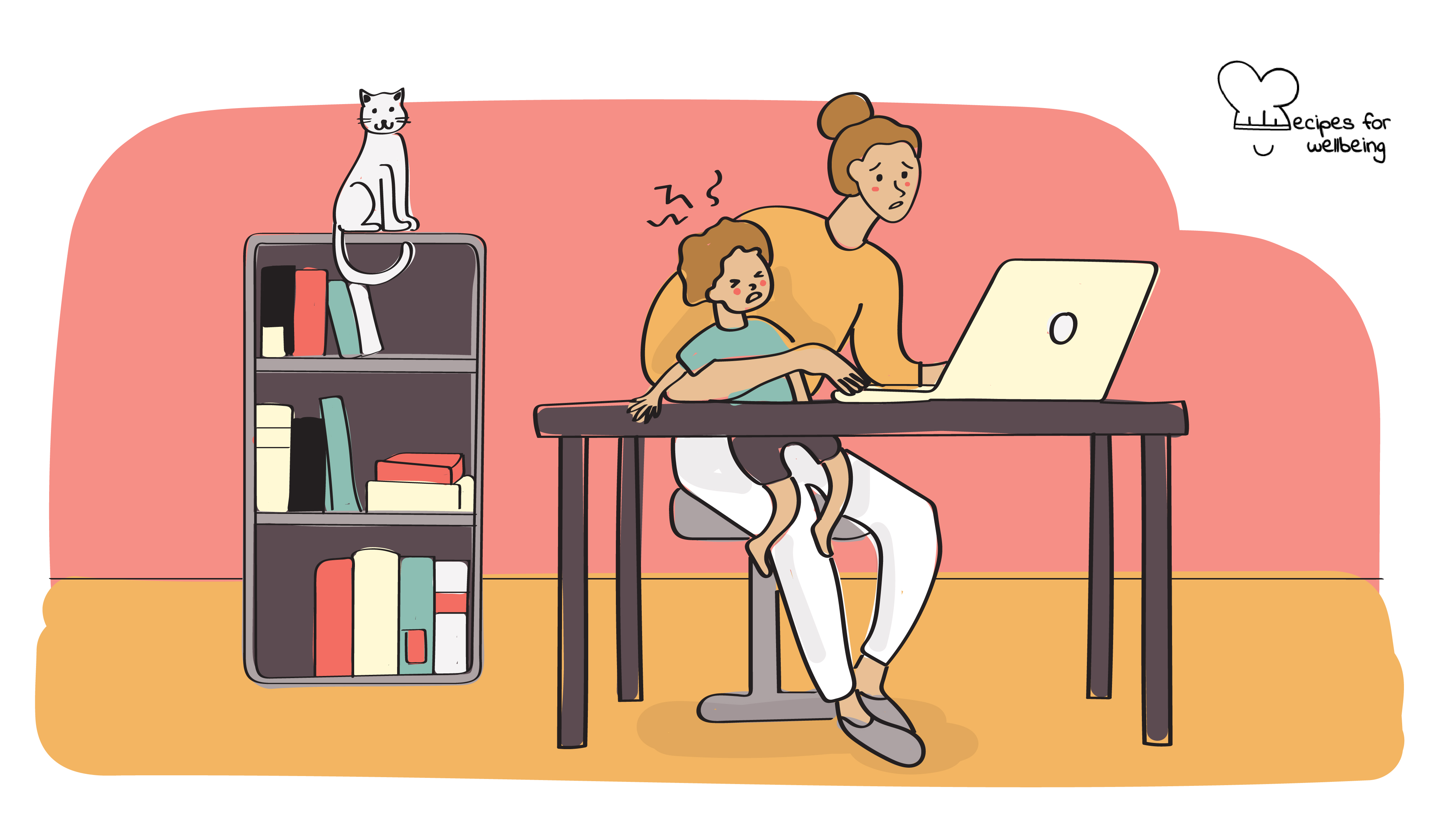
4 tips to avoid WFH burnout
When you say ‘yes,’ to others, make sure you are not saying ‘no’ to yourself. —Paul Coelho
 Serves: 1 person
Serves: 1 person
 Difficulty: Medium
Difficulty: Medium
 Total time: Ongoing
Total time: Ongoing
 Ingredients: Patience, an open mind and dedication to yourself
Ingredients: Patience, an open mind and dedication to yourself
 Wholebeing Domains: Awareness, Digital Consciousness, Radical Care, Rest
Wholebeing Domains: Awareness, Digital Consciousness, Radical Care, Rest
 Wholebeing Skills: Balance, Boundary setting, Digital agency, Digital boundaries, Digital disconnection, Letting go, Mind-body-connection, Pausing, Time management
Wholebeing Skills: Balance, Boundary setting, Digital agency, Digital boundaries, Digital disconnection, Letting go, Mind-body-connection, Pausing, Time management

4 tips to avoid WFH burnout
 Description
Description
Tips to avoid burnout while working from home.
Working from home has its perks: it allows you to connect with colleagues on a global scale, reduce commuting time, and dedicate more time to family and friends. But – only if you are careful. Many people struggle when working from home to actively turn off and to maintain healthy boundaries when the workday is done.
This can be especially true for folks who are prone to “people pleasing” or who suffer with work anxiety and feel the need to constantly impress their team or manager by being constantly available and productive. However, it’s a double-edged sword because without enough rest and time to reset, it can lead to feelings of bitterness, frustration, a lack of creativity and ultimately, burnout.
This recipe has been adapted from the work of Laura M. Giurgea and Vanessa Bohns by our wellbeing content writer collaborator Marissa Del Mistro. If you enjoyed this recipe, check out our additional recipe “Tips to avoid Burnout”.
 Steps
Steps
Step 1 – Create a pre-work routine
As much as many of us may have disliked the commute to an office space, it was a useful signal to our brain to prepare for the workday ahead. You can recreate this with a productive morning routine that puts you into the right mindset for the day ahead. This could be a walk around a local park, attending a yoga class, meeting a friend for coffee, or spending time being creative. Try to choose something that requires taking your full attention away from the work day ahead as this will help you connect with and recharge yourself. Many people find getting ready into their business-like attire for the day to be useful, too.
Step 2 – Assert your needs and respecting your team’s
Many people are juggling more than just their 9-to-5 jobs when working from home. Whether it’s childcare, pet care, personal appointments or needs, it’s nice to accomplish more than just work in a day!
It might mean, however, that your hours look a little different some days. For example, you may wish to work from 6 am until 9 am and then again from 11 am until 4 pm to help with school pick up and drop off. Speak to your manager and assert your needs, then let your team, clients and other important people know your hours. This will help with avoiding any confusion and guilt for missing emails or calls while you are away from the computer. You may wish to update your out of office email for additional coordination.
Asserting your needs extends to ensuring colleagues are respecting your working hours. For example, if you habitually receive urgent emails/phone calls at 6pm, it’s time to bring it up. It can be an awkward but worthwhile conversation, as your evenings should be a sacred space for you to relax and unwind.
Remember to listen to your colleagues’ boundaries, too. If a colleague asserts their needs and boundaries, it’s imperative to respect them and do your best to remember what they need and their work hours.
Step 3 – Schedule breaks
It can be easy to skip lunch or do just 10 more minutes of work – but it’s important to get up for breaks regularly! Not only will your legs, neck, and heart thank you, but your mind will dance with inspiration as you stroll through your local park or stretch on your deck. Challenge yourself by taking it a step further by leaving your mobile phone at home (if possible) to minimise distractions.
If you are looking for inspiration and support for these mini-breaks, why not try our recipe “Pomodoro® Technique for Wellbeing”? Or infuse your work day with a bit of appreciation with “The gratitude alarm” recipe?
Step 4 – Socialise outside the house
We need human interaction, and we need it regularly! If you can, schedule ahead so you have events to look forward to – from a coffee break with a friend to a day trip at the weekend. Everything feels better when we’re with people we love.


 Arabic
Arabic Chinese (Simplified)
Chinese (Simplified) Dutch
Dutch English
English French
French German
German Italian
Italian Portuguese
Portuguese Russian
Russian Spanish
Spanish